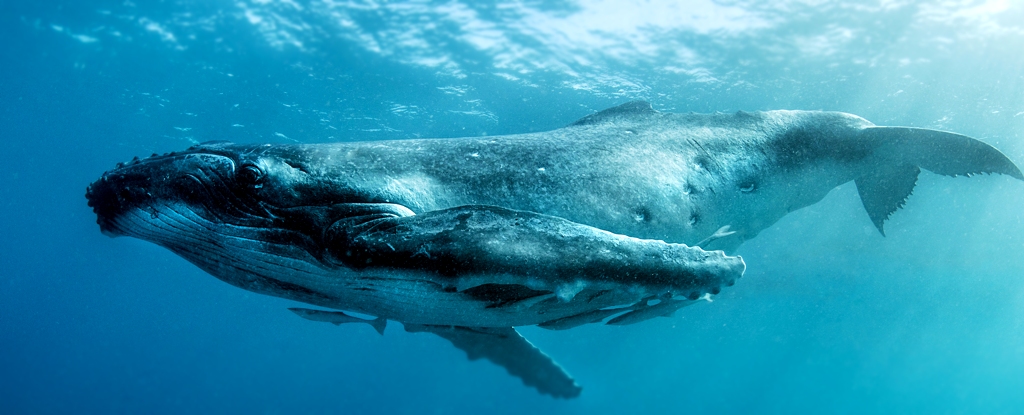What do whale experts and alien hunters have in common? More than you might expect.
For a recent study published in the peer-reviewed journal PeerJ, scientists from UC Davis, the Alaska Whale Foundation, and SETI (Search for Extraterrestrial Intelligence) teamed up.
Their mission: Communicate with whales. And they did just that.
In a landmark experiment, the team had a 20-minute conversation with a humpback whale named Twain in her own language.
Twain and the scientists didn’t talk about the weather or the latest fish gossip — we’re still a long way from that level of understanding.
What did happen, though, was remarkable.
Conversing with whales
The scientists sailed a boat off the coast of Alaska and played what’s called a “contact call” into the ocean to see if any whales would respond.
Contact calls are similar to a human greeting. Whales use them to call over other whales or let each other know where they are, lead author Brenda McCowan, a professor at UC Davis’s School of Veterinary Medicine, told Business Insider.
“They are one of the most common signals within the humpback whale social sound repertoire,” Fred Sharpe, co-author and principal investigator with the Alaska Whale Foundation, told Business Insider.
Sure enough, Twain swam up to the boat and circled it. For the next 20 minutes, the scientists emitted the same contact call 36 different times at varying intervals, and Twain responded to the call each time, even closely matching the intervals.
Meaning, if the scientists waited 10 seconds before playing a call back to Twain, she would in turn wait 10 seconds before responding, McCowan said. This type of interval matching suggests Twain was engaged in an intentional exchange, she added.
“It certainly felt like we had been heard,” Sharpe told BI, emphasizing that their work is done with a permit from the National Marine Fisheries Service and readers should not try this at home (or sea). “And we hope that she felt the same way, too.”
“We believe this is the first such communicative exchange between humans and humpback whales in the humpback ‘language,'” McCowan said in a statement.
The calls came from humpback whales the researchers had recorded from a small group of whales just the day before their encounter. The group had included Twain, so it’s possible Twain was responding to her own signal.
“We might’ve been playing back her own hello to her,” Sharpe said.
So what does this have to do with talking to aliens?
Turns out, Twain’s behavior could be akin to how intelligent alien races may seek humanity out, said Laurance Doyle, a principal investigator at the SETI Institute and coauthor on the paper.
Communicating with extraterrestrials
“An important assumption of the search for extraterrestrial intelligence is that extraterrestrials will be interested in making contact and so target human receivers,” sort of like how Twain responded to the contact call from the scientists, Doyle said in a statement.
Doyle and his colleagues at SETI are working with whale and animal experts at UC Davis and the Alaska Whale Foundation to create intelligent filters to aid in their search for extraterrestrial intelligence.
If extraterrestrials are out there, sending us signals, trying to communicate, we might miss them if we don’t know what to look for, Doyle told BI.
By perfecting these intelligent filters, scientists could use them to identify intelligent signals from space in an attempt to make first contact with an alien race.
“There are diverse intelligences on this planet, and by studying them, we can better understand what an alien intelligence might be like, because they’re not going to be exactly like ours,” McCowan said.
The research is also testing the idea of whether or not intelligent alien life would even seek us out, Doyle told BI.
“Whale research has indicated if you’re intelligent, curiosity comes along with that, and you want to make contact,” Doyle said.
The scientists said they hope similar work can be carried out with other intelligent animals on Earth, including other cetaceans like dolphins, carnivores that cooperate to hunt, and other highly social species like meerkats and elephants.
This article was originally published by Business Insider.
More from Business Insider:





